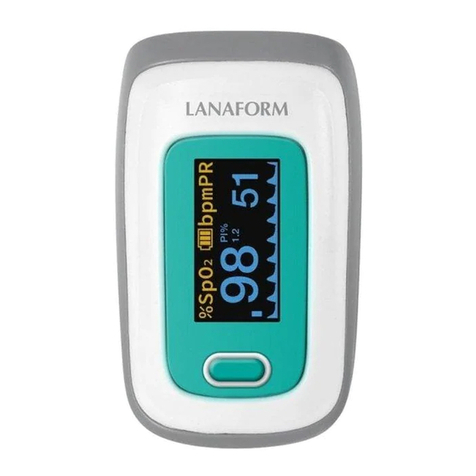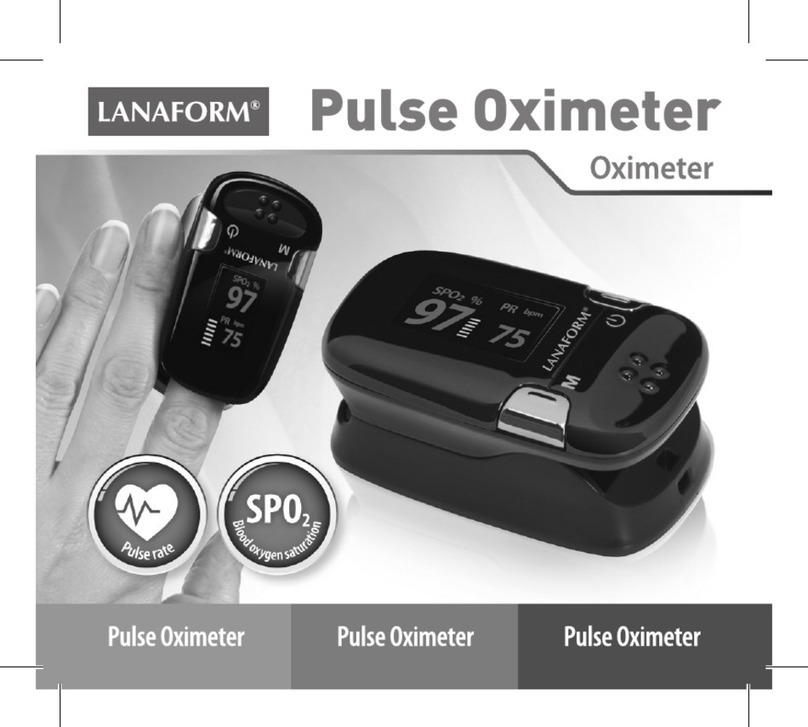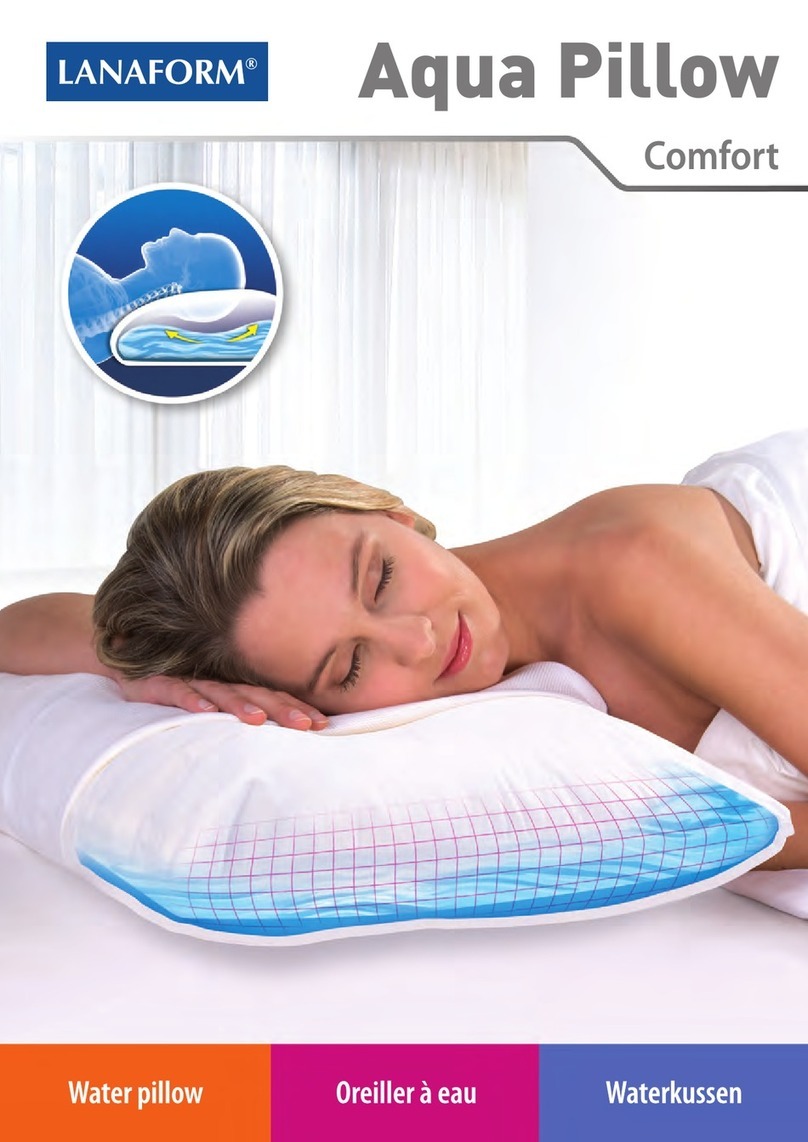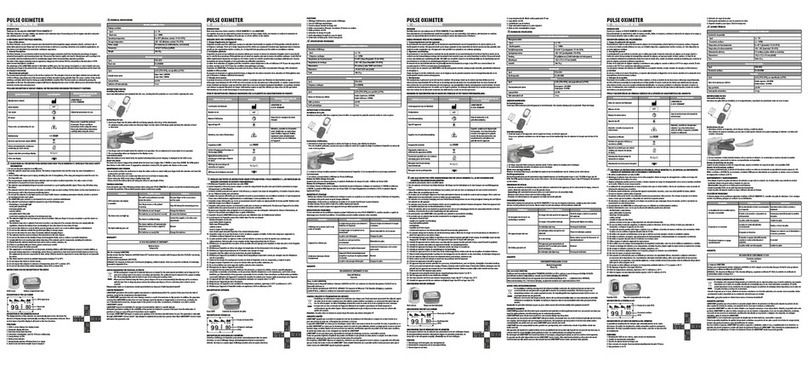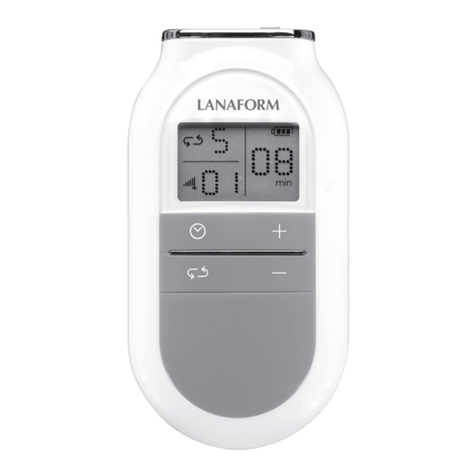
forcing them (nger end: width ap-
prox. > 20mm, thickness > 15mm).
∙
on ngers with anatomical changes,
oedema, scarring or burns,
∙
on ngers that are too thin or nar-
row, for example on young children
(approx. <10mm wide, <5mm thick),
∙on patients agitated at the point of
use (e.g. trembling),
∙ close to highly inammable gas or
explosive mixtures.
•
Prolonged use of the pulse oximeter
may cause pain in people with circu-
lation problems. Do not use the pulse
oximeter for more than 30 minutes on
one nger. This is the only way you will
ensure the correct orientation of the
probe and the skin’s integrity.
•
The pulse oximeter indicates a momen-
tary measurement but cannot be used
for continuous monitoring.
•
The pulse oximeter does not have an Up-
ozornění function and is therefore not
suitable for assessingmedicalresults.
•
You should not practise self-diagno-
sis or self-medication on the basis
of the measurement results without
having discussed it with your doctor.
Do not take a new drug on your own, or
change the type or dosage of an exist-
ing treatment.
•
When taking the measurements, do not
look directly inside the case. Red light
and invisible infrared light from the
pulse oximeter are harmful to the eyes.
•
PortableRF communication equipment
(including peripherals such as antenna
cables and externalantennae) should not
be used within 30 cm of any part of the
pulse oximeter. Otherwise, it could af-
fect the performance of this equipment.
•
The pulse oximeter equipment is cal-
ibrated to display operational oxygen
saturation.
• This device is not designed to be used
by anyone (including children) whose
physical, sensory or intellectual abil-
ities are limited, or who does not have
thenecessary experience and/orknowl-
edge.Where applicable,this personmust,
for his or her own safety, be supervised
by a competent person or must receive
your recommendations on how to use
the device. Keep an eye on children to
prevent them playing with the device.
•
Displaying the wave and pulse bar means
that you cannot assess the intensity of
the pulse and blood circulation at the
measuring point. They represent only
the real-time variations of the signal at
the measuring point; they do not have
a reliable diagnostic value.
•
Failure to follow these instructions
can cause incorrect measurements or
faulty measurements.
E-IM-PO110-002.indd 4E-IM-PO110-002.indd 4 06-03-23 14:53:0006-03-23 14:53:00






